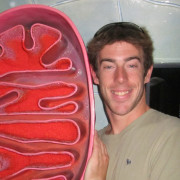Author Interviews, BMJ, Exercise - Fitness / 21.09.2015
Tai Chi Improves Physical and Mental Health in Some Chronic Conditions
 MedicalResearch.com Interview with:
Yi-Wen Chen PhD Candidate, and
Darlene Reid, BMR(PT), PhD
Professor and Chair
Department of Physical Therapy
University of Toronto
Toronto, Ontario
Medical Research: What is the background for this study?
Response: Tai Chi is a time-honored exercise in China, developed during the Sung Dynasty, which has gained increased popularity in Western society. Most styles of Tai Chi consist of slow rhythmic movements that often emphasize typical attributes of exercise including range of motion, strengthening, balance, and postural alignment. In addition, there are spiritual aspects of Tai Chi that focus on relaxation, breath control, and cultivating internal energy. Several studies have demonstrated its multifaceted benefits in the elderly and in people living with chronic diseases including cancer, cardiovascular diseases, respiratory disorders and arthritis. If you were interested in seeing videos of beginner practices, check out some tai chi online to better clarify the motions previously described.
Many individuals that require increased exercise and physical fitness also have one or more comorbidities; 9 out 10 Canadians live with more than one chronic condition and this proportion increases to 98% in adults over the age of 65 years. Increased fitness can increase quality of life and decrease risk of mortality and morbidity in older persons and in many chronic conditions. However, treatment, including exercise is often prescribed within a single specialty. Rarely is information provided to health professionals that integrates therapeutic approaches across several common chronic disorders. Accordingly, we performed a systematic review to determine if Tai Chi is an effective physical activity that improves symptoms, physical function, quality of life and depression in cancer, osteoarthritis (OA), heart failure (HF) and chronic obstructive pulmonary disease (COPD)? We also examined if Tai Chi had similar effects for the same outcome measures across different chronic conditions?
(more…)
MedicalResearch.com Interview with:
Yi-Wen Chen PhD Candidate, and
Darlene Reid, BMR(PT), PhD
Professor and Chair
Department of Physical Therapy
University of Toronto
Toronto, Ontario
Medical Research: What is the background for this study?
Response: Tai Chi is a time-honored exercise in China, developed during the Sung Dynasty, which has gained increased popularity in Western society. Most styles of Tai Chi consist of slow rhythmic movements that often emphasize typical attributes of exercise including range of motion, strengthening, balance, and postural alignment. In addition, there are spiritual aspects of Tai Chi that focus on relaxation, breath control, and cultivating internal energy. Several studies have demonstrated its multifaceted benefits in the elderly and in people living with chronic diseases including cancer, cardiovascular diseases, respiratory disorders and arthritis. If you were interested in seeing videos of beginner practices, check out some tai chi online to better clarify the motions previously described.
Many individuals that require increased exercise and physical fitness also have one or more comorbidities; 9 out 10 Canadians live with more than one chronic condition and this proportion increases to 98% in adults over the age of 65 years. Increased fitness can increase quality of life and decrease risk of mortality and morbidity in older persons and in many chronic conditions. However, treatment, including exercise is often prescribed within a single specialty. Rarely is information provided to health professionals that integrates therapeutic approaches across several common chronic disorders. Accordingly, we performed a systematic review to determine if Tai Chi is an effective physical activity that improves symptoms, physical function, quality of life and depression in cancer, osteoarthritis (OA), heart failure (HF) and chronic obstructive pulmonary disease (COPD)? We also examined if Tai Chi had similar effects for the same outcome measures across different chronic conditions?
(more…)




















